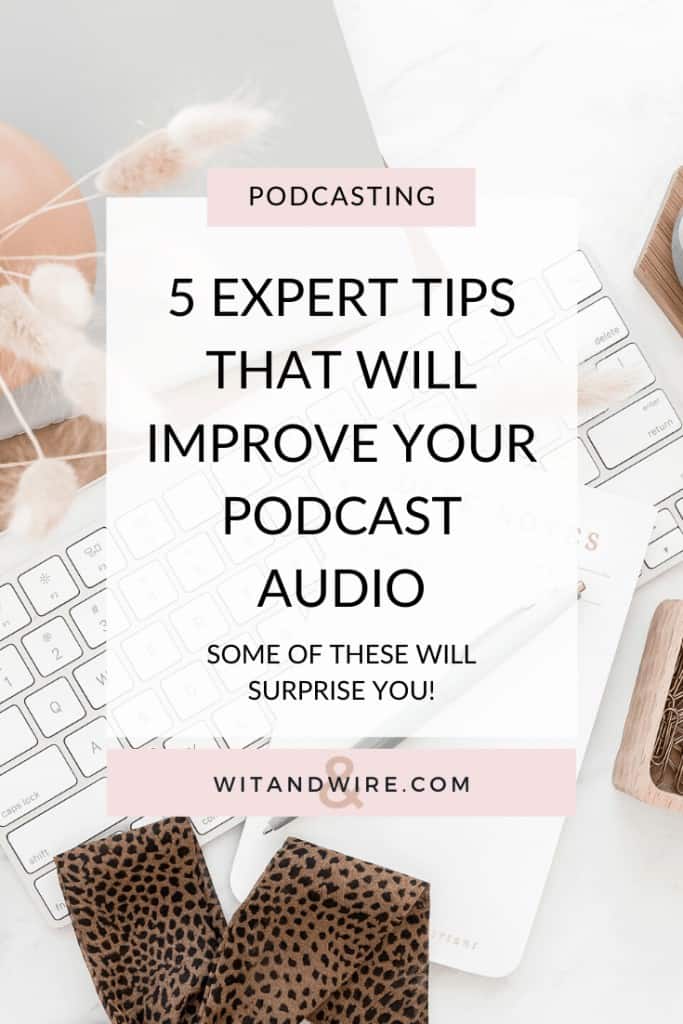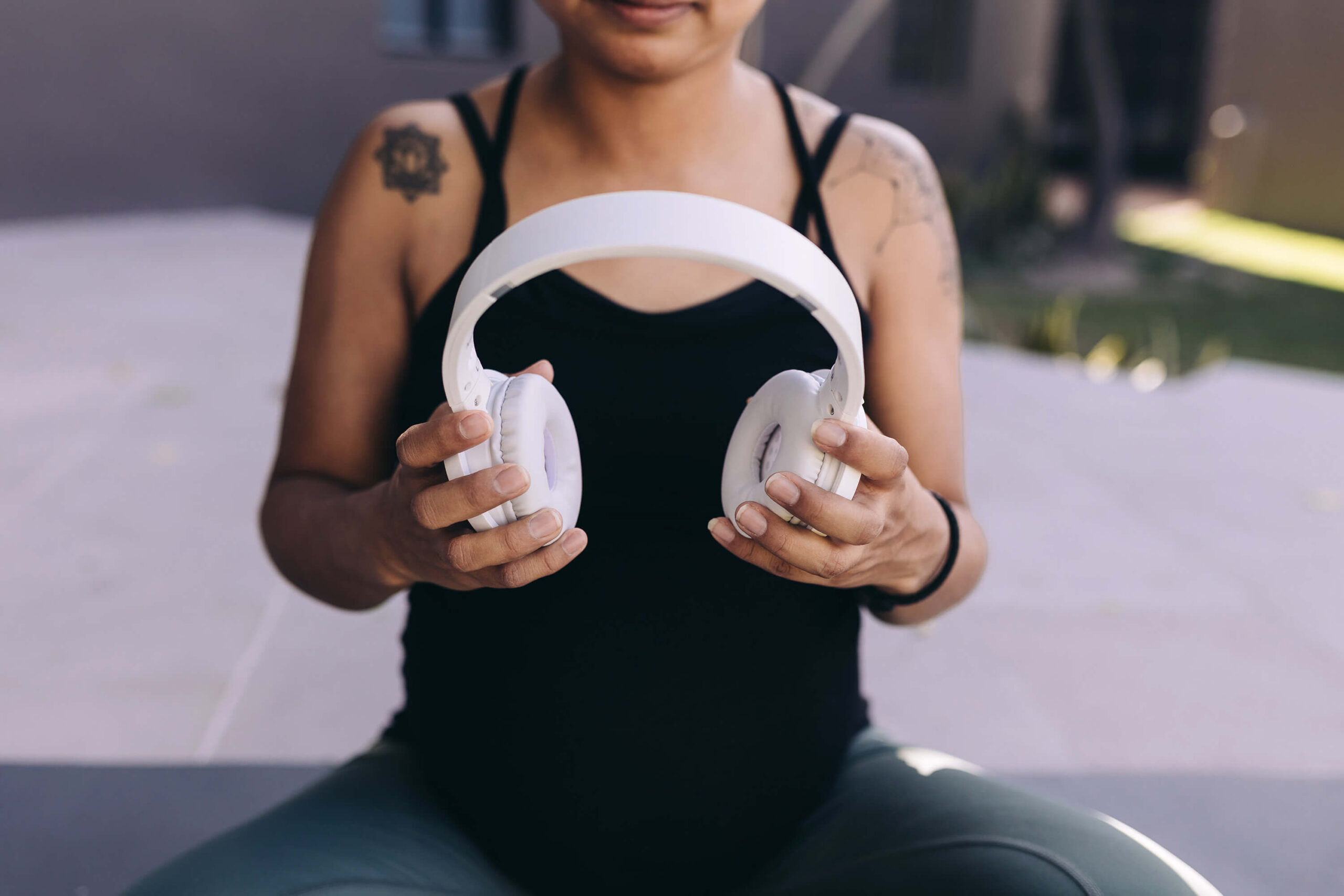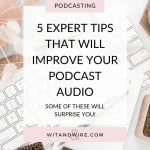So you’ve decided to start a podcast. (Congrats!) Or maybe you have one, but you’re looking for ways to improve your production and find more listeners.
Podcasts rely solely on audio. You don’t have pretty pictures, videos, or captions of what you’re saying in front of your listeners. That is why making sure your podcast audio is clear to your listeners should be your number one priority.
In this post, we are going to go over five ways you can take your podcast audio from amateur to expert.
Make sure you are in a suitable room to record your podcast audio
You know when you’re on the phone with someone and you can hear every single bit of background noise behind them?
For example, you might hear their dog barking at the kids riding their bikes down the street, and then the microwave goes off, followed by the sound of them eating or slurping on a drink.
It’s distracting, right?
When recording a podcast episode, it’s really important to consider what things in your environment might contribute to background noise. These can be things as small as mouse clicks and a computer fan to things like birds outside your window or your cat scratching at the door.
A great way to determine what your readers might hear is to use headphones to check your recording. Turn the volume up so you can hear what the microphone picks up before you start your podcast. Then, figure out what was making that background noise and try to minimize it as much as possible.
Close your windows to eliminate outside noises, don’t record in an area of your house that is heavily trafficked (like the living room or kitchen), and make sure to put your cell phone on silent. Having a clean and clear recording will be way easier down the road.
Think about the acoustics
Echos can be fun – except when you’re trying to listen to a podcast and it sounds like the speaker is sitting at the bottom of a ravine. Everything they say echoes back and makes it unbelievably hard to focus on the content they’re delivering.
That echo-y sound is usually the result of recording in an area with poor acoustics. Flat, hard surfaces tend to reflect sound in a similar way that a mirror reflects light.
A great way to combat this problem is to leave room between you and your microphone, utilize a carpet in your setup, use books to help absorb sound (having bookcases in the area you’re recording in is especially helpful), and stay away from walls since sounds tend to bounce off them.
Another thing to consider avoiding when recording a podcast are certain spaces, like offices, classrooms, and conference rooms. These spaces tend to be exceptionally reverberant.
Reverb is when sound waves continue to reflect off walls, ceilings, and floors until it loses energy and dies out. Rooms with a lot of hard surfaces have a higher reverberance than spaces that utilize both hard and soft surfaces.
Make sure you have good sound quality
Whenever you read a blog post or social media caption, you automatically begin to question the advice or expertise if words are spelled wrong or punctuation is misplaced, and are very likely to stop reading and seek out advice from someone who appears more knowledgeable.
The sound quality of your podcast works similarly.
If your podcast audio sounds echo-y, static-y, or cheaply produced, you’re going to have a harder time gaining and retaining listeners.
Luckily, you don’t have to go all out and buy an insanely expensive microphone and recording equipment just to get great sound quality.
Here are a few ways you can easily achieve awesome sound quality:
- Do some light soundproofing. For example, choose a recording room that has a carpet (instead of hardwood floors) and avoid sitting right in front of a window, which can reflect audio back at you.
- Purchase a pop filter. This works by filtering out any background noise and echo your microphone picks up.
Which USB microphone should you choose? See the full comparison on the Wit & Wire YouTube channel
Related: Which Podcast Microphone is Best For Beginners?
Keep a consistent distance from your mouth to the mic
Have you ever seen a kid use a microphone? They have a tendency to push the microphone right up against their lips, so when they talk their voice is loud and whatever they’re saying can be really difficult to understand.
On the other hand, there are people who speak with the microphone as far as possible from their mouths, which means the microphone can’t pick up most of what they’re saying.
The general rule of thumb is to stay about 3-5 inches away from the microphone while talking, but each mic has its sweet spot. Don’t be afraid to experiment.
Finding that sweet spot is only a quarter of the solution, though.
The rest of the solution is to stay consistent with the distance and position of your mouth in relation to the microphone.
If you look away while you’re talking or reach for something on the other side of the desk, that’s going to change the way you sound. It’s important to be mindful of staying consistent throughout the whole recording.
This tip might take a little time to get used to, but you’ll get used to it.
Slow down
When you get nervous or are on a time limit, it’s natural to begin speaking too fast.
Often, your thoughts might be racing (either from excitement or nervousness), and you want to make sure you get out all of the information you need to and keep your listener’s attention.
Ultimately, when you speak too quickly you’re more likely to use filler words (“um”, “like”, “uh”), run out of breath, and lose your train of thought more often.
What you want to make sure you’re doing is delivering your message with appropriate emphasis. This will help your listeners follow what you’re saying, soak it in, and really listen to what you’re saying.
When you record your podcast audio, make sure you aren’t talking AT your listeners, but TO them. Talking conversationally, like you would with a friend, is the number one way to engage your listeners (which equals retaining your listeners).
Pay attention to your volume
When someone speaks to you with a weak speaking volume, how do you perceive them?
Do you see them as shy? Anxious? Submissive?
Are you likely to consider the advice or recommendations of someone who speaks weakly? Are you able to take their expertise seriously?
Having weak volume, either from yourself or from the quality of the equipment you record on, can communicate fear, nervousness, or uncertainty to your listeners.
When recording a podcast, you want to make sure you speak confidently and assertively without shouting. You don’t want to make your listener strain to hear what you’re saying.
If your equipment struggles to record your voice at an appropriate level, you can usually do some editing to help increase the bass or volume of your voice.
Once you’ve achieved a natural speaking volume, then you can incorporate emphasizing points by varying your volume or pitch to help keep your listeners attention.
Having quality audio for your podcast is probably the most important step you can take for your content quality to go from eh to amazing. When you have a clean and clear sound for your listeners, you’re more likely to gain and retain new listeners.


Melissa Guller is the founder of Wit & Wire, where we help everyday experts become profitable course creators. She previously worked full-time for Ramit Sethi, Teachable, and General Assembly. Today, she shares simplified tech tutorials and modern marketing strategies through our blog, YouTube, and Wit & Wire Weekly newsletter

